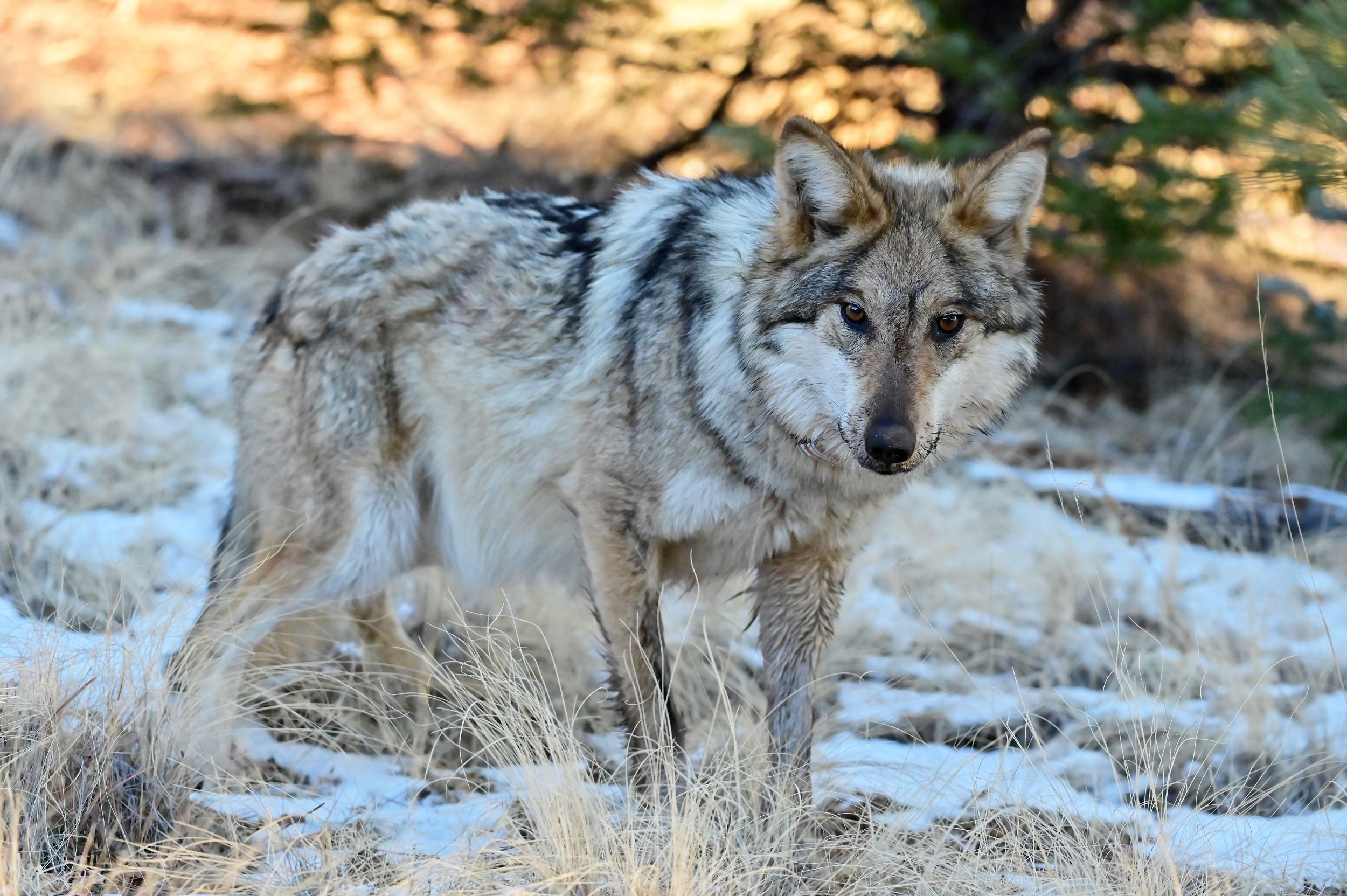Mexican
gray wolves face a
challenging recovery.
 Wilderness Protection Campaigns
Wilderness Protection Campaigns
Protect Mexican gray wolves
The critically endangered Mexican gray wolf is the rarest subspecies of all the North American gray wolves. Once numbering in the thousands, the Mexican wolf population plummeted in the early to mid-1900s due to a federal, state, and private campaign that used poisons, hunting, and trapping to kill wolves and other predators. These eradication efforts, taken to protect livestock, eliminated Mexican wolves from the wild by 1980 and nearly eradicated the species. In 1976, the U.S. Fish and Wildlife Service (USFWS) listed Mexican wolves as endangered and began a captive breeding program, based on seven remaining individuals. In 1998, USFWS reintroduced several families of captive-born Mexican wolves into a special wolf management zone straddling the Arizona-New Mexico border. Since then, USFWS has continued to reintroduce Mexican wolves from captivity into the growing wild population.
Mexican wolf reintroduction and recovery are vital to re-establishing balance in our natural ecosystems. Wolves serve as apex predators that regulate healthy populations of deer and elk, benefit plant life and riparian habitats, and promote biodiversity. Unfortunately, Mexican wolves continue to face an array of threats to their survival and long-term recovery. Mexican wolves suffer from critically low genetic diversity, in part because the entire population descended from only seven founding animals. Members of the current Mexican wolf population are about as related as siblings, which leaves the population less healthy and less able to respond to things like climate change and disease. Despite measures to protect cattle and the livestock industry, some ranchers and local governments continue to oppose reintroduction due to fear about predation on livestock. Since the reintroduction program began, illegal killing has been the largest overall source of mortality for wild Mexican wolves. Finally, USFWS regulations too often reflect politics instead of facts, science, and law.
Fortunately, there has been some good news recently. The latest population count documented 286 animals in the wild, marking a modest increase over the previous year and the eighth consecutive year of population growth. Additionally, New Mexico Wild and partner organizations, represented by the Western Environmental Law Center, are pursuing a lawsuit in federal court aimed at forcing the USFWS to revise management policies to support the long-term recovery of Mexican wolves and to comply with the Endangered Species Act and National Environmental Policy Act. The UWFWS must alleviate the genetic threats to Mexican wolves, prevent and punish illegal killings, allow Mexican wolves to roam into important habitat north of I-40, and facilitate the establishment of at least three interconnected subpopulations of Mexican wolves, as recommended by scientists.
For decades, New Mexico Wild has been at the forefront of protecting our small Mexican wolf population, keeping remote areas of the state wild enough for them to thrive, and advocating for responsible wildlife management policies. With your help, we will continue this critical work until the iconic Mexican wolf is recovered. Because, as we all know, Wolves Belong!
Please sign the petition urging the Biden Administration to protect Mexican Gray Wolves here.
Get Involved
Mexican Gray Wolf
Action Center
Visit Page
News Updates
Urgent call to action: Speak up for New Mexico’s Endangered Species!
ACTION NEEDED BY MAY 17TH The U.S. Fish and Wildlife Service has proposed to weaken the regulations under the Endangered Species Act (ESA) in a
Read MoreWandering Wolf “Ella” Found Deceased in New Mexico
For immediate release: March 31, 2025 Media contacts: Greta Anderson, Western Watersheds Project (520) 623-1878; greta@westernwatersheds.org Chris Smith, WildEarth Guardians (505) 395-6177, csmith@wildearthguardians.org Sally
Read MoreMexican Gray Wolf Population Reaches New Milestone, But Recovery Faces Challenges
The wild Mexican gray wolf population has reached a new milestone with a minimum of 286 wolves now roaming the landscapes of New Mexico and
Read MoreMexican Gray Wolves Near Flagstaff: A Missed Opportunity for Natural Recovery
A wild Mexican gray wolf pair was located near Flagstaff, Arizona earlier this month, sparking both excitement and concern among conservation groups including New Mexico
Read MoreAsha denied freedom for failure to breed
For Immediate Release, July 25, 2024 Contacts: Chris Smith, WildEarth Guardians, (505) 395-6177, csmith@wildearthguardians.org Claire Musser, Grand Canyon Wolf Recovery Project, (928) 202-1325, claire@gcwolfrecovery.org Cyndi
Read More
Wilderness and Wild and Scenic designations are paramount in order to protect the Mexican gray wolf from illegal killings

![]() There are 241 Mexican gray wolves known to survive in the wilds of southwestern New Mexico and southeastern Arizona. If we want to protect New Mexico’s wild heritage, we must act now to protect the Mexican gray wolf. That’s why New Mexico Wild remains committed to advocating for the conservation of the wild places that Mexican gray wolves call home.
There are 241 Mexican gray wolves known to survive in the wilds of southwestern New Mexico and southeastern Arizona. If we want to protect New Mexico’s wild heritage, we must act now to protect the Mexican gray wolf. That’s why New Mexico Wild remains committed to advocating for the conservation of the wild places that Mexican gray wolves call home.







